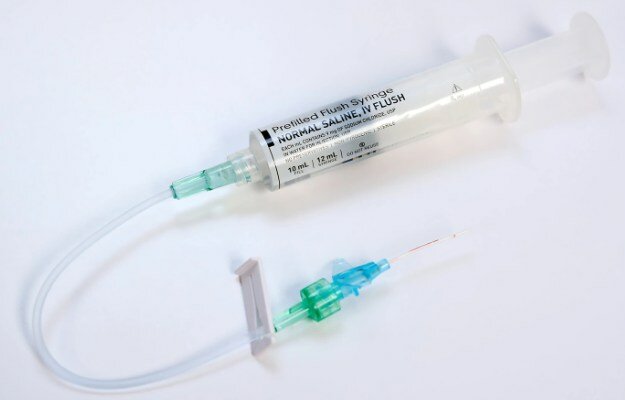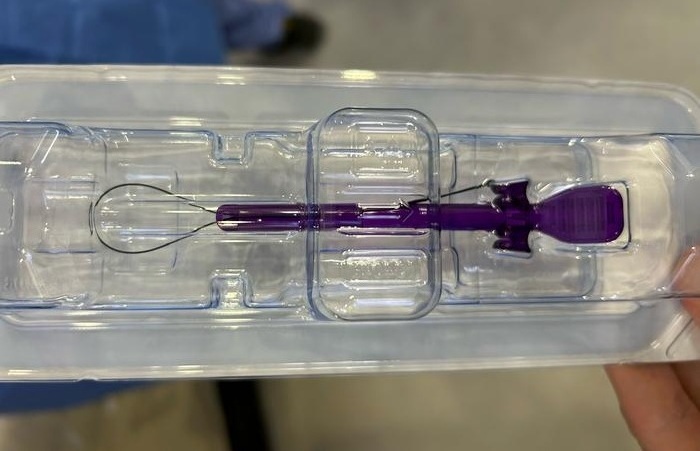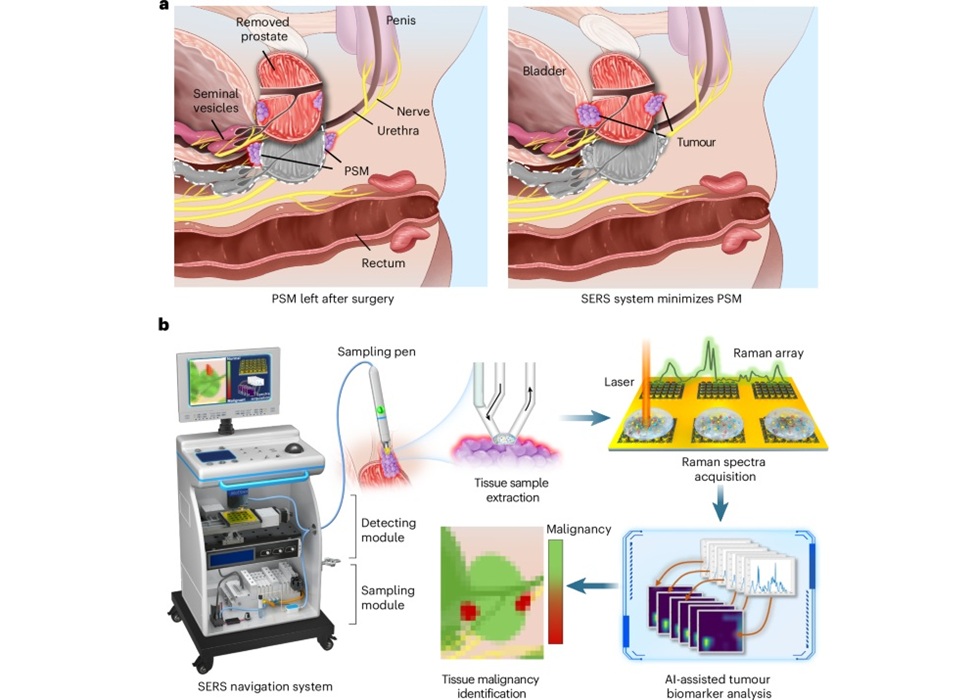Spongelike Bandage with Antimicrobial Efficacy Stops Hemorrhaging and Mitigates Risk of Infection
|
By HospiMedica International staff writers Posted on 17 Oct 2024 |

Without timely medical intervention, injuries from traffic accidents, serious workplace incidents, or weapons can lead to life-threatening hemorrhaging. These fatalities often occur within the first 30 minutes to one hour after the injury. Researchers have now created a new hemostatic bandage with antimicrobial properties to help prevent such bleeding in critical situations.
The spongelike hemostatic bandage, named SilFoam, has been developed by researchers at the University of Central Florida (Orlando, FL, USA) and functions more like a foam than a traditional bandage. SilFoam is a liquid gel made from siloxanes (composed of silicon and oxygen) and is delivered through a specialized two-chamber syringe that quickly expands into a spongy foam when the components mix within the wound in less than a minute. The sponge exerts pressure to control the hemorrhage at the application site while also acting as an antibacterial agent due to the inclusion of silver oxide. For every five milliliters of gel injected, the foam expands to approximately 35 milliliters. The researchers also discovered that their sponge allowed for gentler removal. The bandage’s adhesive properties are optimized to prevent rupturing of smaller blood vessels upon removal, while maintaining sufficient adhesion to muscles, veins, and arteries to prevent blood leakage. The sponge’s porosity and adhesion enhance its ability to expand and seal the wound, enabling the body’s natural clotting mechanisms to take effect.
Researching methods for addressing wounds requires special care to avoid causing harm to test subjects; however, the researchers circumvented this challenge by using a functional anatomic model for testing their methods. They utilized specially designed mannequins that featured realistic blood vessels and wounds to assess their foam, aiming for preliminary results that would justify further testing. The experiments yielded promising outcomes, particularly when comparing SilFoam to five other existing treatment options. The findings from the study, published in the journal Biomaterials Science, indicate that SilFoam offers numerous advantages, including significantly reduced leakage, storage at room temperature instead of requiring refrigeration, lower material costs, and minimal training needed for syringe use.
“If you have something that’s very sticky, like a bandage that you can slap onto your wound, that that will prevent blood from coming out, but if you want to remove that bandage, it can cause tissue damage or pain,” said Pritha Sarkar, a graduate student in the materials science department at UCF, who assisted with the experimentation. “Our polymer system doesn’t stick to your skin, so it’s very easy to remove. We have a dressing that can expand onto your wound and seal it shut, but at the same time, once it’s done its job, you can remove it very easily.
Latest Critical Care News
- Glowing Bacteria ‘Pills’ for Detecting Gut Diseases Could Eliminate Colonoscopies
- Skin-Permeable Polymer Patch Delivers Insulin Non-Invasively Through Skin
- Nanogel Technology Almost 100% Effective in Destroying Drug-Resistant Bacteria Within Hours
- Wearable Ultrasound Sensor Delivers Noninvasive Treatment Without Surgery
- Gel-Free ECG System to Transform Heart Health Diagnosis
- Biodegradable Patch Repairs Damaged Tissue After Heart Attack
- Magnetically Guided Microrobots to Enable Targeted Drug Delivery

- Smart Nanomaterials Detect and Treat Traumatic Brain Injuries Simultaneously
- Earlier Blood Transfusion Could Reduce Heart Failure and Arrhythmia in Heart Disease Patients
- 'Smart' Shirt Detects Epileptic Seizures in Real Time
- Skin Patch Measures Effectiveness of Flu/COVID Vaccines in 10 Minutes
- Complete Revascularization Reduces Risk of Death from Cardiovascular Causes
- Tiny Fish-Inspired Robots Navigate Through Body to Deliver Targeted Drug Therapy
- Coronary Artery Stenosis Could Protect Patients from Pulmonary Embolism Effects
- Sweat-Powered Sticker Turns Drinking Cup into Health Sensor
- Skin-Mounted 3D Microfluidic Device Analyzes Sweat for Real-Time Health Assessment
Channels
Surgical Techniques
view channelNovel Endoscopy Technique Provides Access to Deep Lung Tumors
Detecting lung cancer early can save lives, but diagnosing small tumors deep in the outer regions of the lungs remains a major clinical challenge. Although CT scans frequently identify tiny suspicious... Read more
New Study Findings Could Halve Number of Stent Procedures
When a coronary artery becomes acutely blocked during a heart attack, opening it immediately is essential to prevent irreversible damage. However, many patients also have other narrowed vessels that appear... Read morePatient Care
view channel
Revolutionary Automatic IV-Line Flushing Device to Enhance Infusion Care
More than 80% of in-hospital patients receive intravenous (IV) therapy. Every dose of IV medicine delivered in a small volume (<250 mL) infusion bag should be followed by subsequent flushing to ensure... Read more
VR Training Tool Combats Contamination of Portable Medical Equipment
Healthcare-associated infections (HAIs) impact one in every 31 patients, cause nearly 100,000 deaths each year, and cost USD 28.4 billion in direct medical expenses. Notably, up to 75% of these infections... Read more
Portable Biosensor Platform to Reduce Hospital-Acquired Infections
Approximately 4 million patients in the European Union acquire healthcare-associated infections (HAIs) or nosocomial infections each year, with around 37,000 deaths directly resulting from these infections,... Read moreFirst-Of-Its-Kind Portable Germicidal Light Technology Disinfects High-Touch Clinical Surfaces in Seconds
Reducing healthcare-acquired infections (HAIs) remains a pressing issue within global healthcare systems. In the United States alone, 1.7 million patients contract HAIs annually, leading to approximately... Read moreHealth IT
view channel
EMR-Based Tool Predicts Graft Failure After Kidney Transplant
Kidney transplantation offers patients with end-stage kidney disease longer survival and better quality of life than dialysis, yet graft failure remains a major challenge. Although a successful transplant... Read more
Printable Molecule-Selective Nanoparticles Enable Mass Production of Wearable Biosensors
The future of medicine is likely to focus on the personalization of healthcare—understanding exactly what an individual requires and delivering the appropriate combination of nutrients, metabolites, and... Read moreBusiness
view channel
Philips and Masimo Partner to Advance Patient Monitoring Measurement Technologies
Royal Philips (Amsterdam, Netherlands) and Masimo (Irvine, California, USA) have renewed their multi-year strategic collaboration, combining Philips’ expertise in patient monitoring with Masimo’s noninvasive... Read more
B. Braun Acquires Digital Microsurgery Company True Digital Surgery
The high-end microsurgery market in neurosurgery, spine, and ENT is undergoing a significant transformation. Traditional analog microscopes are giving way to digital exoscopes, which provide improved visualization,... Read more
CMEF 2025 to Promote Holistic and High-Quality Development of Medical and Health Industry
The 92nd China International Medical Equipment Fair (CMEF 2025) Autumn Exhibition is scheduled to be held from September 26 to 29 at the China Import and Export Fair Complex (Canton Fair Complex) in Guangzhou.... Read more















